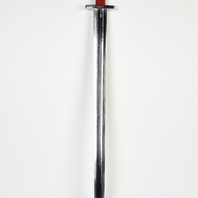
Viking Objects
Reproduction Viking Age Sword
A reproduction of the sword found in Grave 511 at Repton. The hilt is made of wood laths wrapped in tabby weave textile strips. The scabbard is made of two wooden laths, lined with trimmed sheep fleece, and covered in an oak-stained, stitched, calf-leather cover. The strap slide is copper alloy and inserted under the leather. The sword belt shown with the scabbard is based on the sword belt from Grave 511 at Repton.
Read More
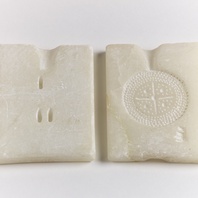
Viking Objects
Reproduction Soapstone Mould
A soapstone (steatite) mould for casting jewellery. This reproduction is double-sided so that it can be used to cast the main brooch or two disc brooches simply by reversing the mould. It is based on known examples of soapstone moulds but the main mould has been created to reproduce the Barker Gate brooch from Nottingham. Soapstone or steatite was widely used in Scandinavia and the Viking diaspora, as it is soft and easily carved, in particular for cooking vessels in cultures that did not produce ceramics. There are soapstone quarries in Norway, Shetland and Greenland. Soapstone objects found elsewhere generally suggest a Viking link to one of these places, though smaller ones are often repurposed from what were originally larger vessels.
Read More
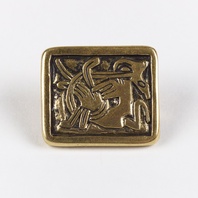
Viking Objects
Reproduction Square Mammen Brooch
This reproduction brooch is based on a small number of Mammen-style brooches found in England. Three rectangular brooches of this type are known from Linwood, Lincolnshire, West Stow Heath, Suffolk, and Bergh Apton, Norfolk, with further examples found in Cambridgeshire and East Anglia in 2015 and 2016. It is a type which has Carolingian-inspired shapes and Scandinavian decoration, which seem to have been produced in the Danelaw, and was an accessory for women who wore Scandinavian dress. Scandinavian brooches came in a variety of sizes and shapes which included disc, trefoil, lozenge, equal-armed, and oval shapes. The different brooch types served a variety of functions in Scandinavian female dress with oval brooches typically being used as shoulder clasps for apron-type dresses and the rest being used to secure an outer garment to an inner shift. Anglo-Saxon brooches do not match this diversity of form with large disc brooches being typical of ninth century dress styles with smaller ones becoming more popular in the later ninth and tenth centuries. However, since disc brooches were used by both Anglo-Saxon and Scandinavian women they are distinguished by their morphology. Scandinavian brooches were typically domed with a hollow back while Anglo-Saxon brooches were usually flat. Moreover, Anglo-Saxon brooches were worn singly without accompanying accessories.
Read More
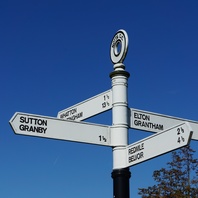
Viking Names
Granby
Granby, in the Bingham Wapentake of Nottinghamshire, comes from the Old Norse male personal name Gráni and the Old Norse element by ‘farmstead, village’. It is of interest that a document from c. 1200 records that there was a Granehou nearby and it is possible that this was the burial-mound (Old Norse haugr) of the same Gráni who gave his name to the village. Unfortunately, no such mound can be identified today.
Read More

Viking Names
Bigby
Bigby, in the Yarborough Wapentake of Lincolnshire, probably comes form the Old Norse male personal name Bekki and the Old Norse element by ‘farm, settlement’.
Read More
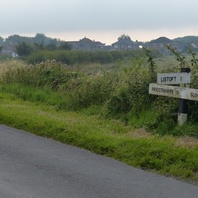
Viking Names
Sloothby
Sloothby, in the Calcewath Wapentake of Lincolnshire, is a complicated name. There are multiple possibilities for the first element of the place-name. The second element is the Old Norse element by ‘a farmstead, a village’. One suggestion is that the first element is the Old Norse byname Slóði ‘the lazy one’; however, this name is not found independently in Lincolnshire and is uncommon in Scandinavia. Another alternative is that the first element could be slóði used as a river-name, referring to a slow-moving sluggish stream. Sloothby is in the fens and a stream runs by. Furthermore, the first element could be the Old Norse element slóð ‘a track, trail’, perhaps referring to a track through the fens. Sloothby is a joint parish with Willoughby.
Read More
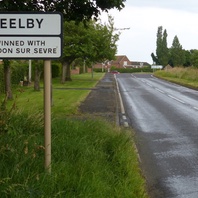
Viking Names
Keelby
Keelby, in the Yarborough Wapentake of Lincolnshire, is a Old Norse compound coming from kjǫlr ‘a keel, a ridge (of hills)’ and by ‘farmstead, village’. The village is situated on a rising piece of ground between 15 and 20 metre contours (one small patch above 20 metres). This forms a distinct elongated ‘ridge’ running south-east-north-west.
Read More

Viking Names
Tumby
Tumby, in the Gartree Wapentake of Lincolnshire, is a difficult name. The first element may be the Old Norse male personal name Tumi, a name which occurs in several Swedish and Danish runic inscriptions. Alternatively the first element could be Old Norse tún ‘an enclosure, a farmstead’. The second element is bý ‘a farmstead, a village’.
Read More
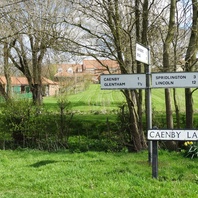
Viking Names
Caenby
Caenby, in the Aslacoe Wapentake of Lincolnshire. likely comes from the otherwise unrecorded Old Norse male byname Kafni (probably originally a byname) and the Old Norse element bý ‘a farmstead, a village’,
Read More
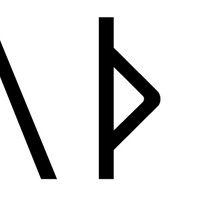
Viking Names
Modir
The Old Norse female name Móðir is found in Motherby, Cumberland, and has been suggested as the first element in Moodersley, a minor name in Kedleston, Appletree Hundred, Derbyshire. The name Kedleston itself includes the male personal name Ketill. Móðir means literally ‘mother’ and the use of family terms as personal names (compare the use of ‘Sonny’ in English), while not frequent, is attested in Scandinavia.
Read More
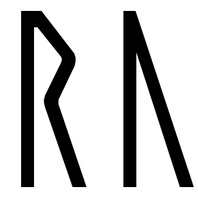
Viking Names
Skroppa
Skroppa is not recorded outside the sagas of the Icelanders but has been postulated as a female personal name which forms the first element of Scrooby, Nottinghamshire. In the Saga of Hord, Skroppa is a sorceress who uses illusion and shapechanging.
